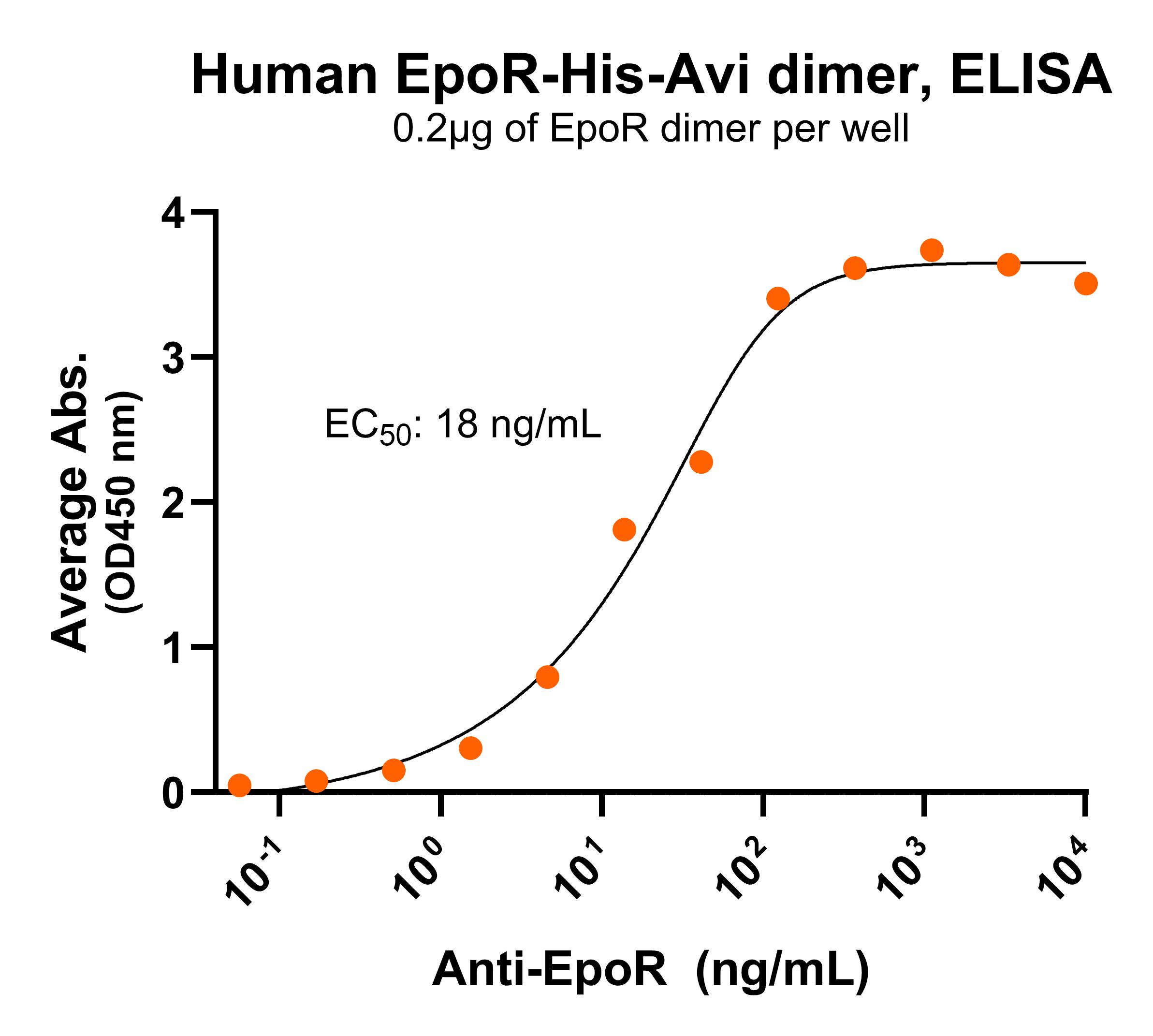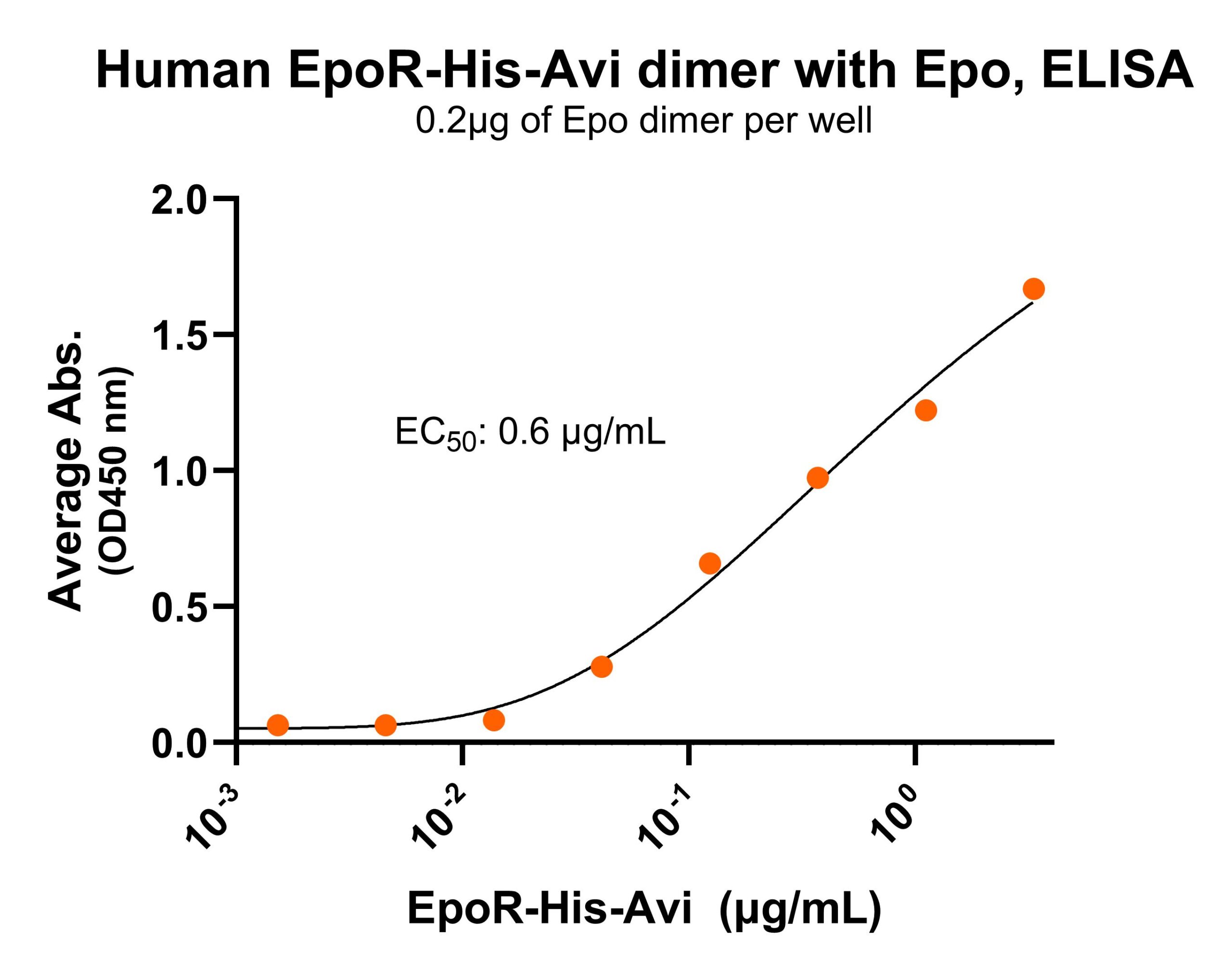 MW: Molecular Weight marker reduced condition
NR: EpoR dimer under non-reducing condition
MW: Molecular Weight marker reduced condition
NR: EpoR dimer under non-reducing condition Immobilized human EpoR-His-Avi dimer protein (CSP-24087) at 2 μg/mL (100 μL/well) can bind anti-human EpoR monoclonal antibody with half maximal effective concentration (EC50) range of 9.1-36.2 ng/mL (QC tested).
Immobilized human EpoR-His-Avi dimer protein (CSP-24087) at 2 μg/mL (100 μL/well) can bind anti-human EpoR monoclonal antibody with half maximal effective concentration (EC50) range of 9.1-36.2 ng/mL (QC tested). Immobilized human Epo at 2 μg/mL (100 μL/well) can bind EpoR-His-Avi dimer protein (CSP-24087) with half maximal effective concentration (EC50) range of 0.3-1.2 μg/mL (QC tested).
Immobilized human Epo at 2 μg/mL (100 μL/well) can bind EpoR-His-Avi dimer protein (CSP-24087) with half maximal effective concentration (EC50) range of 0.3-1.2 μg/mL (QC tested).